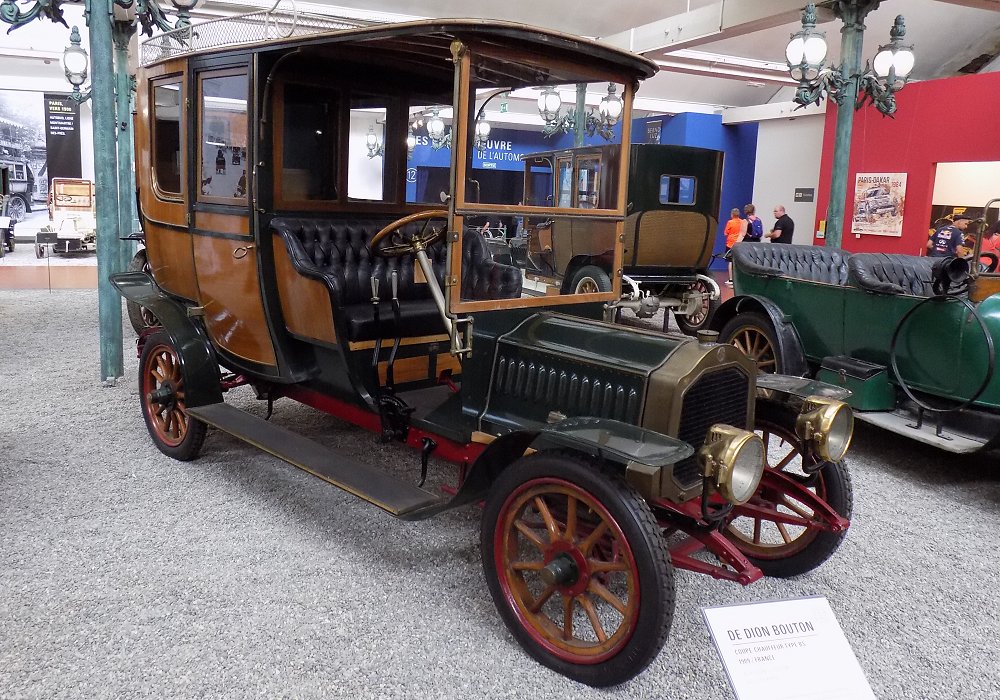Description
The De Dion-Bouton Type BS Coupé Chauffeur was a formal and elegant automobile produced in the early 1910s, reflecting the company’s move into the upper segments of the motorcar market. The “Coupé Chauffeur” body style was a popular configuration among luxury car makers at the time, catering to wealthy clientele who employed drivers and required a clear separation between chauffeur and passengers.
The Type BS was built on a robust steel chassis and powered by a four-cylinder engine, likely in the range of 2.5 to 3.5 litres in displacement. The engine used a side-valve design and water cooling, consistent with De Dion-Bouton engineering of the era. It produced an output of approximately 12 to 16 horsepower depending on the specification and tuning. Power was transmitted to the rear wheels via a shaft drive and a manual gearbox, typically offering three or four forward gears.
The Coupé Chauffeur body was defined by its dual-compartment layout. The chauffeur sat in an open front section, often protected only by a small roof or canopy, with no doors or side windows. This allowed for clear visibility and ease of communication with passing traffic. In contrast, the rear passenger compartment was enclosed, offering privacy and protection from the elements. It was usually fitted with glass windows, upholstered seating, and detailed interior trim including curtains, wood veneer, and fold-down armrests or tables.
This arrangement mirrored the carriage designs of the late Victorian period, reinforcing the sense of social distinction between driver and occupant. The De Dion-Bouton version was typically coachbuilt, with custom bodies created by specialists according to the buyer’s wishes. The company supplied the rolling chassis, while bodywork could be provided by firms such as Rothschild, Labourdette, or Kellner in Paris.
The vehicle rode on semi-elliptic leaf springs front and rear, offering a reasonably smooth ride for the time. Braking was mechanical and applied to the rear wheels, supplemented in some cases by a transmission brake. The wheels were usually large wooden artillery-style or wire-spoked with tall, narrow pneumatic tyres.
The exterior of the Type BS Coupé Chauffeur was often finished in dark, conservative colours like black, navy, or deep green, with polished brass or nickel trim around the lamps, radiator, and handles. Acetylene or electric lamps were mounted at the front, with carriage-style sidelights and a rear tail lamp.
This model was particularly popular with professionals, urban elites, and business owners who required a prestigious vehicle for transport while employing a full-time driver. It was used both for city driving and intercity travel, offering comfort and dignity to its passengers.
Today, the De Dion-Bouton Type BS Coupé Chauffeur is a rare and desirable collector’s item, representing a peak of Edwardian motoring sophistication. It holds historical value not only for its engineering but for its reflection of early 20th-century social norms and the transition from horse-drawn carriages to motorised personal transport. Restored examples are occasionally displayed at concours events and classic car rallies, admired for their craftsmanship, elegance, and the unmistakable character of pre-WWI luxury automobiles.
